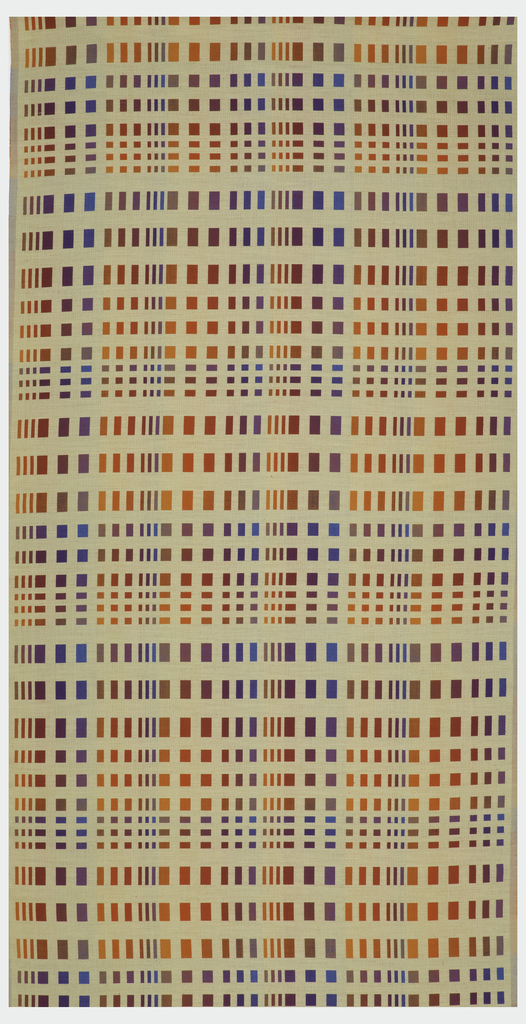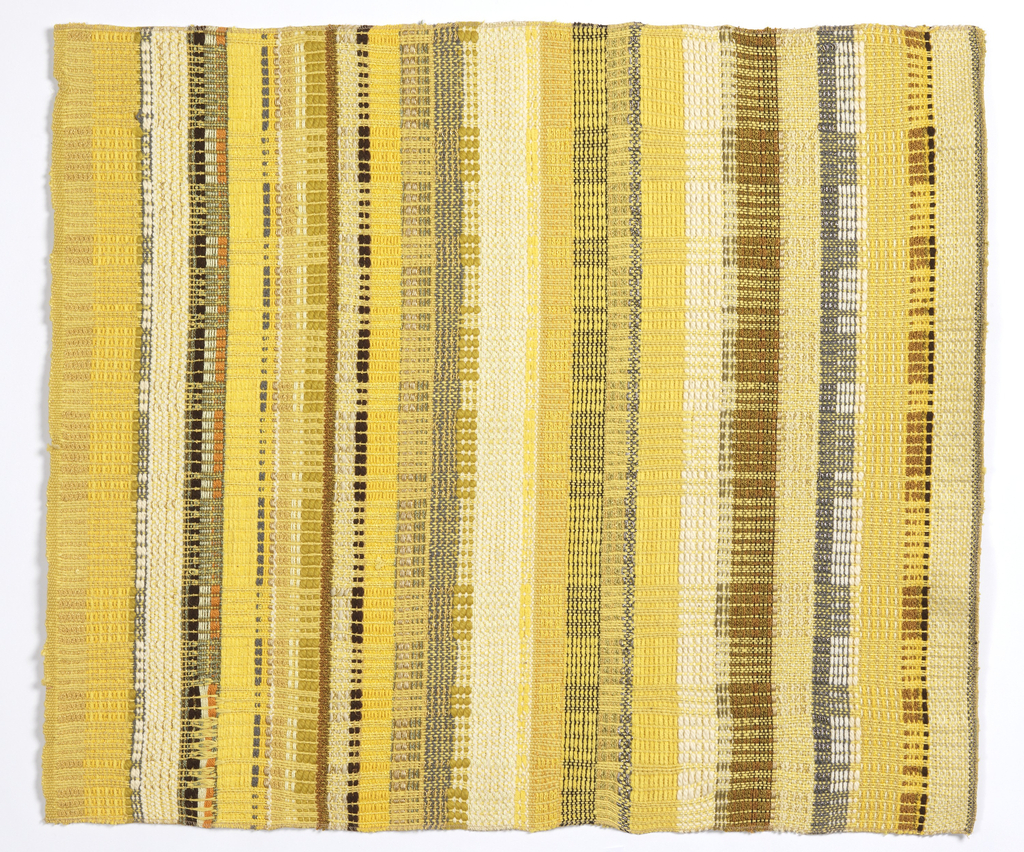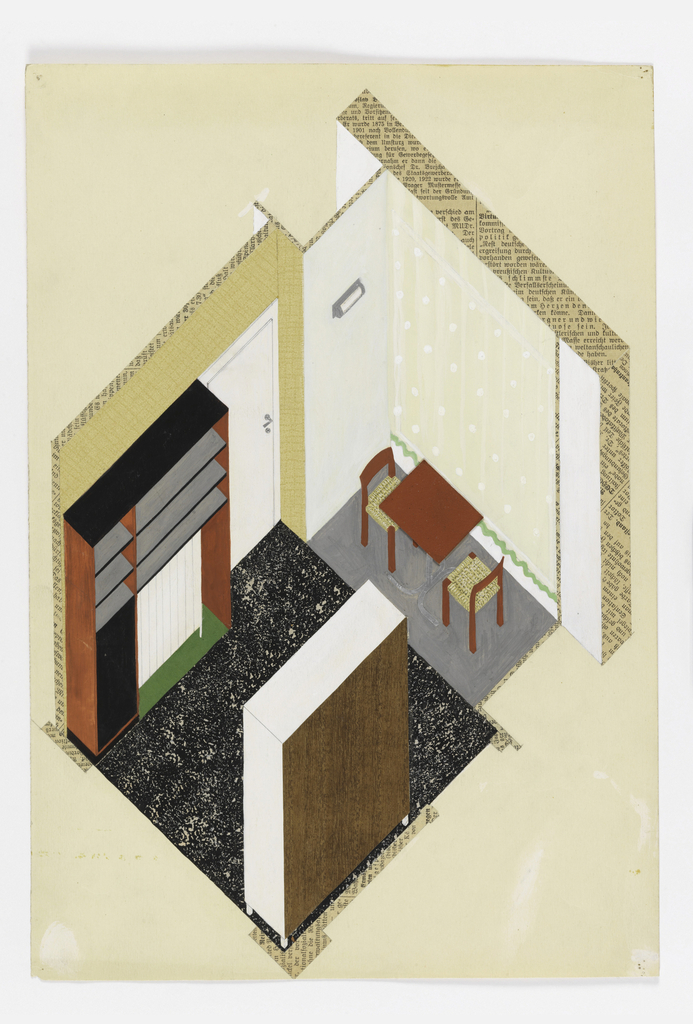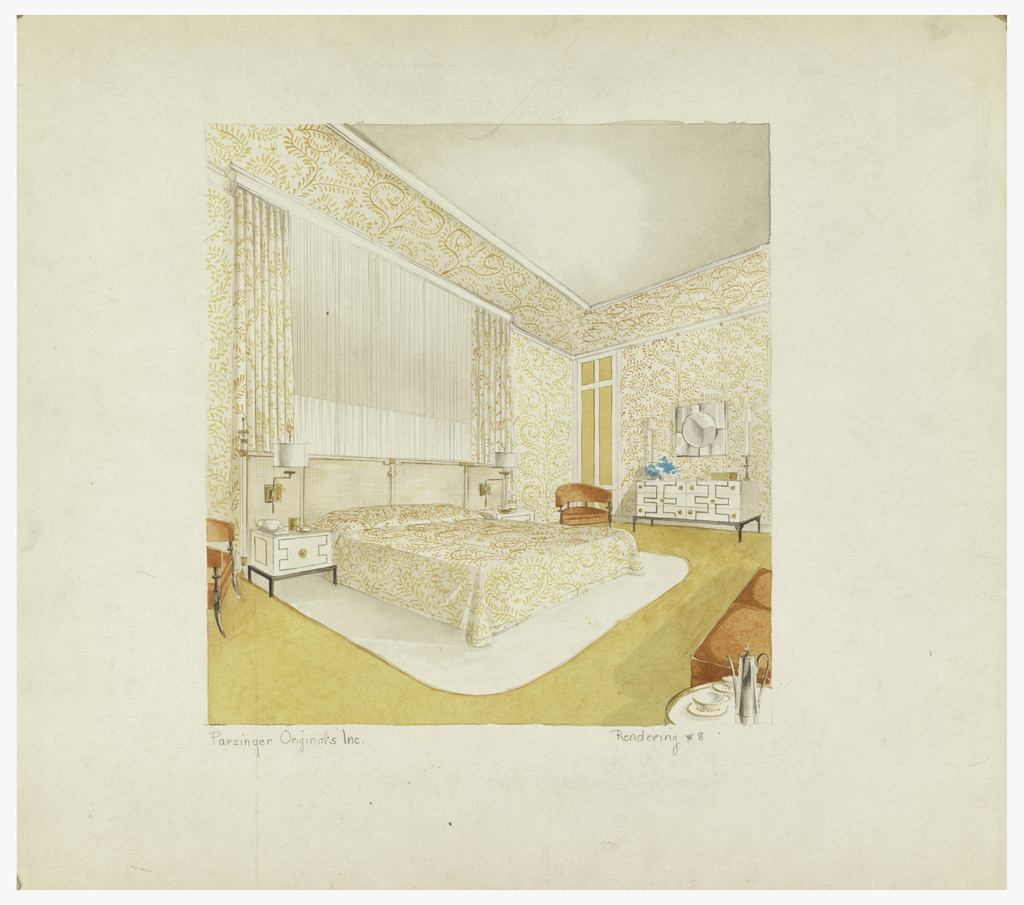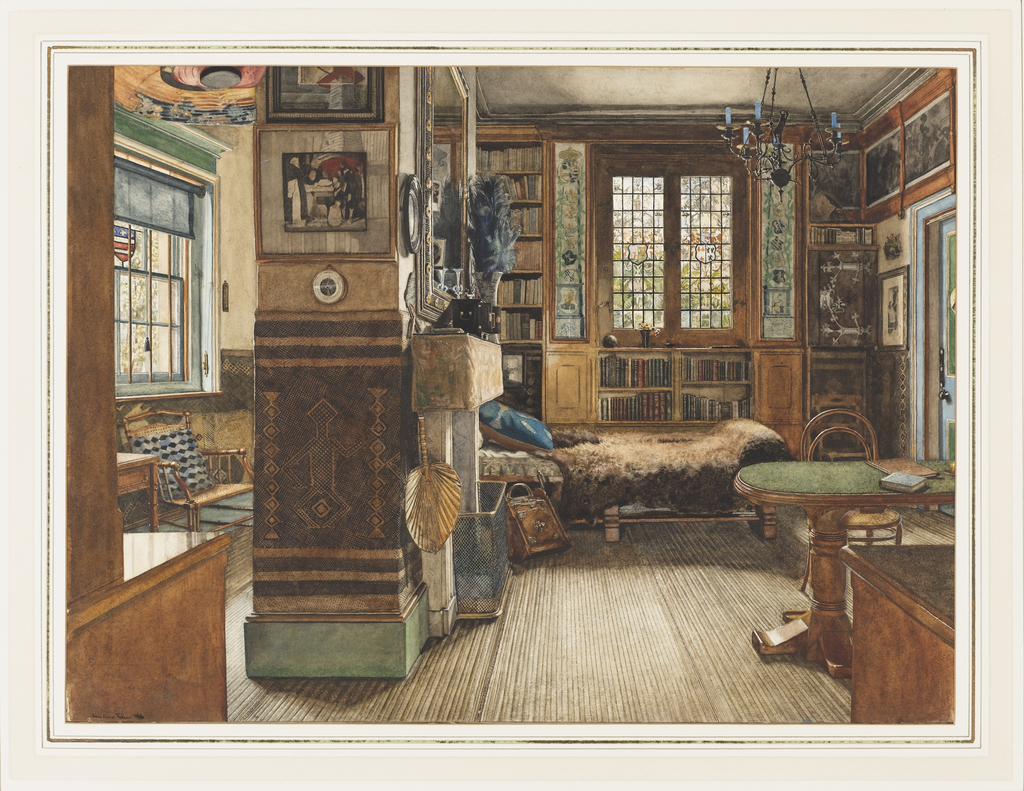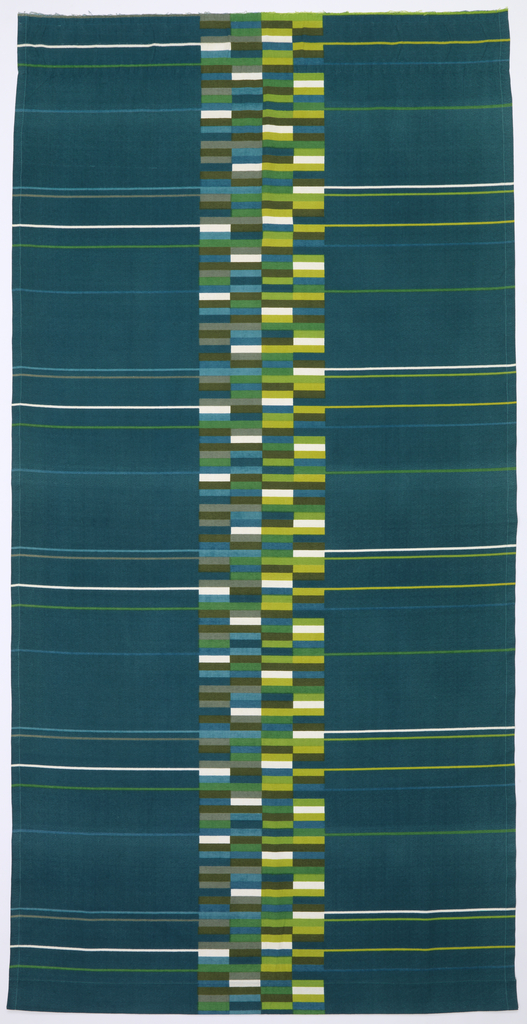From the Object of the Day archives, Landis II (1973) designed by Richard Landis in collaboration with Jack Lenor Larsen and now in the museum's permanent collection.
Remoulade developed out of a hand-woven wall hanging Jack Lenor Larsen made during the summer of 1954 at Haystack Mountain School of Crafts in Maine, where he remains an Honorary Chair. The original hanging, a weft-faced weave, used over seventy different yarns, including cotton, silk, wool, jute, and Lurex, inserted randomly, to create a richly...
German-born Margarethe (Grete) Fröhlich was a young artist when she moved to Frankfurt, Germany in 1929. In the early 1920s Frankfurt had experienced a housing crisis. In an effort to address the shortage of affordable housing, the city embarked on a major building project, constructing nearly 15,000 residences in a period of five years. The...
I was lucky enough to have lived with Tommi (Anton) Parzinger furniture as a teenager. I was raised in a modern house, and my mother worked with an interior designer who ordered several Parzinger pieces, a brass-studded sideboard, a brass chandelier and a coffee set. Today my sister has the sideboard and I have the...
Public Lecture: Join us as Ralph Rucci talks about his creative process, inspiration, and the role of the hand in his work. About the Design by Hand series: Launched in fall 2013 with the iconic Finnish brand Marimekko, the Design by Hand series focuses on the craftsmanship, innovations, and merits of contemporary global designers. Special...
According to the art critics of the day, the rooms in Sir Lawrence Alma-Tadema’s Townsend House, his home near St. Regent’s Park, could be considered a portrait of the artist, a celebrated painter of Greek and Roman themes. In this cozy library interior, painted in 1884 by Alma-Tadema’s daughter, we see: a fur-covered couch and...
Often called “England’s Eamses,” Robin and Lucienne Day were a designing couple utterly committed to modernism. The unexpectedness and vitality of their postwar interior furnishings, particularly Lucienne’s pattern designs for textiles, carpets, wallcoverings, and dishware, shaped the look of modern England in the 1950s. Lucienne is rightfully famous for Calyx, the organic design inspired by the work...
Giovanni Battista Piranesi, an eighteenth-century designer of architecture, elaborate Interiors and exquisite furnishings, boldly combined historical elements to create innovative designs that still resonate today. Cooper-Hewitt invites a panel of designers to discuss how, like Piranesi, their imaginative and often irreverent use of historical motifs invigorates contemporary design. This panel features: Anna Sui, Fashion Designer;...
As documents of domestic life, the watercolors featured in House Proud celebrate nineteenth-century interiors and the designers that conceived of them. Cooper-Hewitt invites contemporary designers Hermes Mallea, Carey Maloney, Mitchell Owen, and Thomas Jayne to join exhibition curator Gail Davidson for a roundtable discussion on residential interior design, historic restorations, design promotion, and the role...
Charles Rohlfs (1853-1936) ranks as among the most innovative furniture makers from the period around 1900. Praised by the international press and exhibited in the United States and Europe, his exquisite designs reflect a unique mix of styles, including the Aesthetic Movement, Arts and Crafts, Art Nouveau and proto-modernism. Despite the fame of his work...
Internationally renowned architect and designer Michael Graves will provide an intimate portrait of his celebrated career and discuss the influences that shaped his thinking and approach to design—from his early days as a student and a recipient of the prestigious Prix de Rome fellowship, to his distinguished academic career at Princeton University and the development...
The St. Coletta School, designed by Michael Graves in 2001. Internationally renowned architect and designer Michael Graves will provide an intimate portrait of his celebrated career and discuss the influences that shaped his thinking and approach to design—from his early days as a student and a recipient of the prestigious Prix de Rome, to his...
